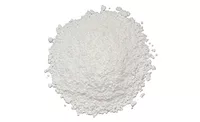CPCA Prepares for WTO Showdown Over EU Classification for Titanium Dioxide

OTTAWA, Ontario — The European Committee for Risk Assessment (RAC) has notified the World Trade Organization (WTO) of its intention to proceed with a number of regulatory actions including the proposal to classify titanium dioxide (TiO2) as a Category 2 Carcinogen under the EU’s Classification, Labelling and Packaging (CLP) Regulation. If allowed to proceed, this regulation will cause significant global trade disruptions that will impact Canadian industries including paint and coatings.
The Canadian Paint and Coatings Association (CPCA) has been engaged on this issue through its membership in the International Paint and Print Ink Council (IPPIC) and its member associations in Europe. The WTO notification allows for non-European countries to engage on the issue as it is a Technical Barrier to Trade (TBT). CPCA is now engaging with Canadian trade authorities regarding the significant and unwarranted socio-economic and trade impacts that would result from the proposed classification, which would provide no benefits for the protection of human health.
CPCA President and CEO Gary LeRoux commented, “To date, the European process has been flawed and has not considered over 50 years of scientific evidence proving that titanium dioxide is a safe and crucial ingredient in paint and coatings products. The global industry remains hopeful that Europe will resolve the issue when it comes before the WTO.”
TiO2 is an inert inorganic compound that is used as a white pigment in many industrial applications. These applications include the manufacture of paints, coatings, printing inks and wallcoverings, where titanium dioxide plays a critical role in providing essential product properties: whiteness, covering power, brightness, stability and durability of color that cannot be achieved with other raw materials. TiO2 is also used in many other consumer products.
The CPCA maintains that the powder form of titanium dioxide presents zero risk to consumers when incorporated in a finished product such as paint. Consumers and professionals using paint or ink products cannot be exposed to the powder form of TiO2, once it is embedded in a paint or printing ink.
During the manufacturing process, exposure to TiO2 powder might occur; however, national level regulations exist around dust exposure and protection of workers. Studies over 50 years, including 24,000 workers, have not found any correlation between workers exposed to TiO2 whatsoever. In addition, the five tests on rats cited by the European Chemicals Agency (ECHA) used unrealistically high amounts of titanium dioxide that would not be allowed in a manufacturing environment. This is in stark contrast to more than 2,000 tests conducted over many years on the same subject with the opposite conclusion. Based on this, CPCA and IPPIC members consider the use of TiO2 in paints, coatings, printing inks and wallcoverings to be safe for workers during the manufacturing process. This is further supported by the ongoing commitment of CPCA member companies to take every precaution to ensure the safety of their products and workers throughout their supply chain.
TiO2 was scheduled for evaluation under Europe’s Reach Regulation in 2017, which is designed to recommend the most appropriate regulatory measures for a substance based on whether it poses a risk to the environment or human health. This process was pre-empted in 2016, by ECHA without evidence to support the current classification. CPCA and all IPPIC members, representing the coatings industry around the world, strongly supports reliance on sound scientific evidence to determine the risk management measures required for TiO2.
Looking for a reprint of this article?
From high-res PDFs to custom plaques, order your copy today!




